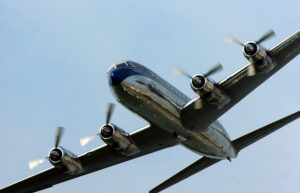Aviation has long since been recognised as the safest mode of long-distance transport. There are numerous statistics to support this, and it may come as some comfort to nervous flyers to look at the safety data before taking a flight.
IATA (International Air Transport Association) 2022 data shows that a person would have to travel by air every single day for 25,214 years to have a chance of experiencing a 100% fatal accident. In the same year, approximately 4.3 billion people flew safely on over 46 million flights, and current statistics show that flying is becoming even safer.
Operational risks are the primary concern of all airlines, and strict measures are taken to enhance and ensure passenger safety. But regardless of all the reassuring data, as many as one in ten people are afraid of flying which can stem from other phobias such as fear of heights, claustrophobia, or a general fear of the unknown and sense of being out of control.
These anxieties can be addressed with strategies and techniques such as attending a fear of flying course. It may also come as some comfort to know that IMET Alloys as part of the aerospace value chain, meets the industry’s highest quality standards for mission critical materials. The next time you fly there is a good chance that some of the titanium or superalloy in the plane will have been processed by IMET!
Today, many airline passengers faced with long lines at security, limited legroom and charges for basic comforts may long for the ‘Golden Age’ of aviation of the 1950’s. Back then, commercial air-travel was promoted and perceived as a glamorous event, when you were served meals on porcelain plates, seats were large with ample legroom and passengers were well-dressed.

What people forget is that air-travel back then was far more dangerous than it was today. US airlines alone had about 6 crashes per year in the 1950’s and the British made De Haviland Comet (the World’s first Jet powered airliner) was withdrawn from service for 4 years in the mid 1950’s due to a series of accidents. But people were generally able to cross continents in only a few short hours in a comfortable and ‘relatively’ safe environment – at least in the Western world.
The story in the former Soviet Union was rather different. With Soviet airliners at least one generation behind their western counterparts, they were much slower, smaller, and offered very little in comfort. They were also unable to fly long distances which for a country as vast as the Soviet Union was a major disadvantage. A flight across the country from Moscow to Vladivostok (3986 miles) required 6 stops to refuel and would take 50 hours in aircraft unable to fly high enough to avoid poor weather.
Realising that they were falling behind the West, this prompted a famous Russian aeronautical engineer, Andrei Tupolev to fast-track the design of a jet powered aircraft in as little as 3 years, that would have more passenger capacity and cost a fraction of the De Havilland Comet to produce. It would also prove that the Soviet Union was just as advanced as the West.
Rather than designing a new aircraft, Tupolev decided to use his previously designed TU16 bomber to form the basis of his new airliner. He would need to widen the fuselage but could keep the same engines, although they were very loud and inefficient. He could also reuse the same wings, although the pilots would have to land faster!
This all saved on engineering time and Tupolev met his target of delivering the TU104 in 3 years, which with the grounding of the De Haviland meant that this was the World’s only operating jet powered aircraft at the time. But it was not long before problems set in. Pilots said it was difficult to fly and unresponsive. It landed at higher speeds to avoid stalling and the brakes were ineffective, often overshooting the runway.
It also responded poorly in turbulence and was frequently hurled high into the sky due to updrafts resulting in a series of crashes – it was claimed that 1 in 4 of all TU104’s was destroyed in accidents.
This and other examples help put into perspective how fortunate we are today, despite the queues, the delays, and other inconveniences we experience. That said, the reality of airport chaos should not be under-estimated, and the history of passenger safety may not be our first thought when faced with a delay of several hours in an overcrowded departure lounge!
I look forward to follow-up on the outcomes of the recent International Air Transport Association (IATA) World Safety and Operations Conference that took place earlier this month under the theme ‘Leadership in Action – Driving Safer and More Efficient Operations’.
No doubt this would have been a superb opportunity for delegates to share experiences and best practices in helping keep aviation safety as the industry’s key priority.

